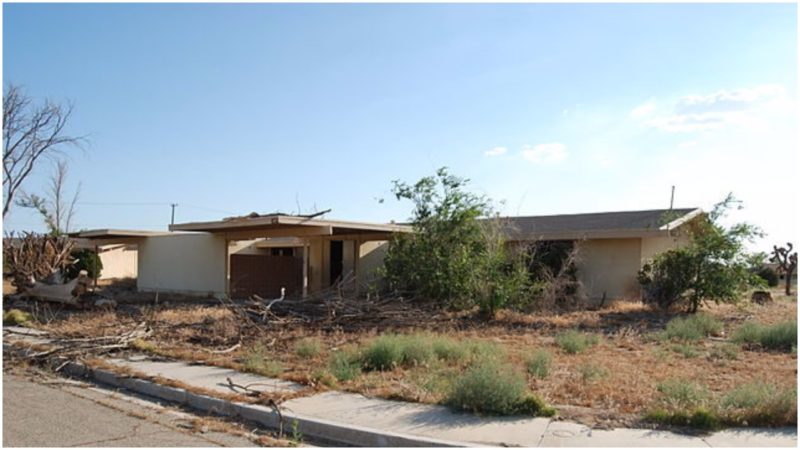George Air Force Base was opened in June 1941 and officially closed in 1992 at the end of the Cold War. Since then, parts of it have been left to deteriorate under the hot sun. For more than 50 years, the former US military base was a bustling community and center of important military operations.
Today it is only an eerie ghost town. The empty streets, houses, military installations, and other buildings are in ruins and quietly are being overtaken by the mysterious forces of nature.
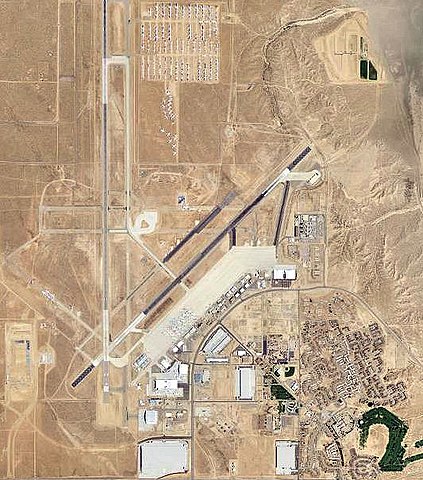
The closed base is located in San Bernardino County, California, between the cities of Victorville and Adelanto, near the legendary Route 66 and the Mojave River in the Mojave Desert (also known as High Desert). The pollution was spotted for the first time in the 1970s and the entire area is now classified as a highly polluted location and it is entered in the list of the United States most hazardous places (officially known as Superfund sites).
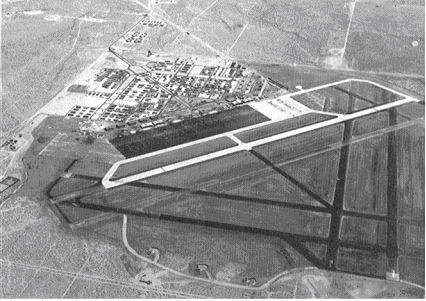
The soil and groundwater are highly contaminated from radioactive and toxic materials like heavy metals, jet fuel, medical wastes, pesticides, construction debris, nitrates, dioxins, and several other contaminants. The main function of the air force base was to give support to complex tactical warplane missions. It was also training center for pilots and other air crews. Such operations involved using large amounts of hazardous materials not only for the missions, but for maintenance of the planes too.
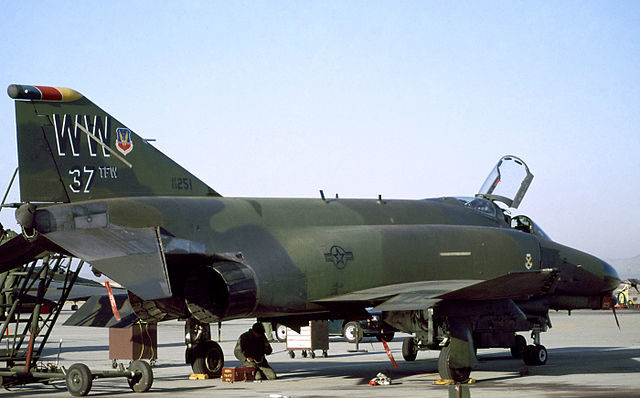
During World War II there was located the Advanced Flying School. The future pilots and bombardiers were trained on warplanes like the T-6 Texan, AT-17, Curtiss AT-9, AT-11, and BT-13 Valiant. The location was seen as ideal for an air force base because the desert offers wide open spaces and clear skies. At the base were built more than 250 buildings.
Not only were barracks and military structures erected, but also hospitals, shops, houses, clubs, and libraries. Although cities already existed in the region, a small community and residential complex were developed near the airfield. A complete network of electricity, water, gas and wastewater was constructed too. The buildings were made of materials of temporary character, such as concrete, asbestos, and wood. The base served nearly 4,000 military staff.
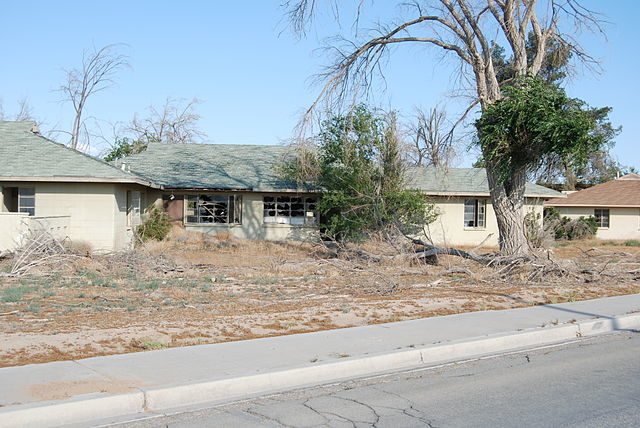
After the war, the base was closed for several years. It was reopened in 1950 at the start of the Korean War. The temporary buildings were reconstructed with new materials. The air force base continued to be a training school not only for American pilots but also for NATO and allied pilots. It was also a command center for military operations during the Vietnam and the Gulf Wars. The air force base was closed after the collapse of the USSR and the inevitable end of the Cold War. The inhabitants moved to the nearby cities.
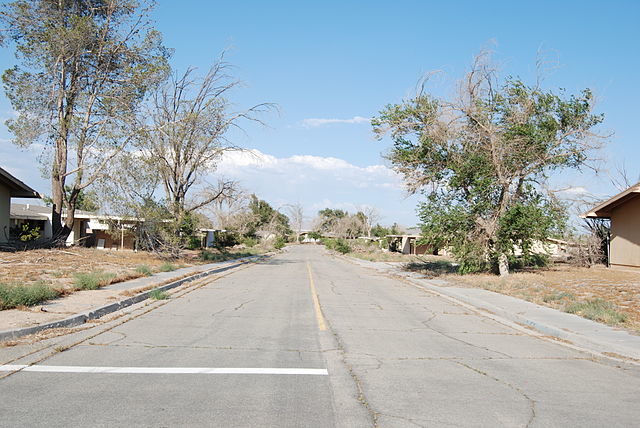
The clean-up process began after the closure of the base. There were plans to demolish the structures, but the demolition and the clean-up process stopped 10 years ago due to the expense of the project. Now the authorities are only monitoring the situation without taking serious actions towards cleaning up the mess. Direct contact or ingestion of the hazardous substances could create health problems.
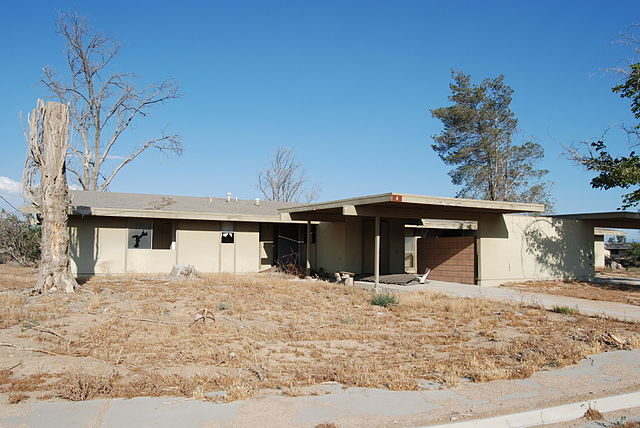
It seems that the contaminants are being left to degrade on their own in a slow and natural process, which could last hundreds or maybe thousands of years. The buildings, instead of being deliberately and systematically razed, were left to decay on their own too. Thus, a perfect apocalyptic landscape was created in the lonely desert. The harsh vegetation and the large piles of tumbleweeds only lend additional “charm” to the strange atmosphere.
At the site can be found many abandoned structures in a very derelict condition, such as hundreds of houses, a hospital, a hotel, dozens of barracks, a photo lab and the remains of few schools. Much of the houses have burnt down in the course of the site’s use as an urban military training center. The signs of the training activities can also be spotted on the few destroyed vehicles scattered around the empty streets. The base also served as a filming location.
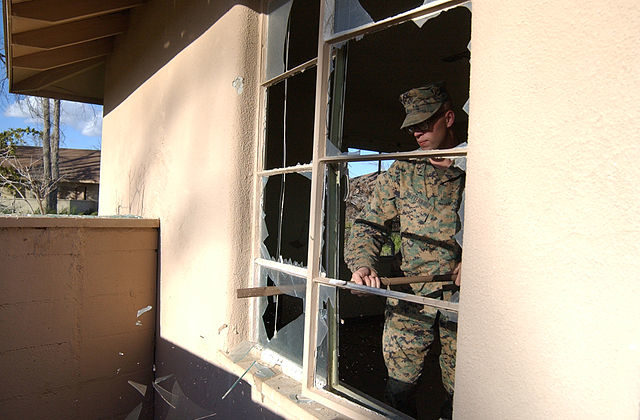
Some parts of the former base located at the periphery and far away from the most polluted sectors are still active. There can be found a church, a community center, and even a children’s playground. Also, a few hangars and the airfield are part of the Victorsville’s Southern California Logistics Airport (SCLA) where transport companies are using the airfield for their flights. The former military airfield is suitable for landing and taking off of cargo aircraft. The city of Victorville plans to build a rail yard, but these plans have been left for the future, due to pollution.
